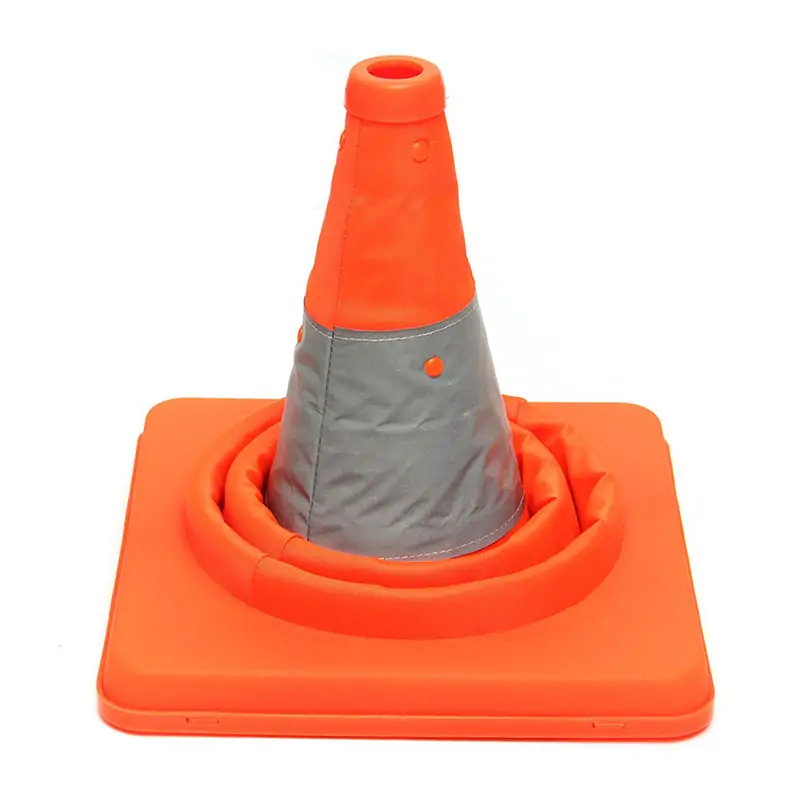In an era of increasing environmental awareness and the need for sustainable solutions, solar-powered technology has emerged as a game-changer in various industries. One such application is the utilization of solar power in traffic signs. Solar-powered traffic signs offer significant advantages over conventional signs by harnessing renewable energy and reducing dependence on grid electricity.
How Solar-Powered Traffic Signs Work?

Solar powered traffic signs convert sunlight into electrical energy using photovoltaic (PV) panels, which consist of solar cells. These solar cells are made from semiconductor materials that generate an electric current when exposed to sunlight.
The PV panels on solar-powered traffic signs are strategically positioned to capture maximum sunlight throughout the day. The solar energy absorbed by the panels is converted into direct current (DC) electricity. This electricity is then stored in batteries, typically deep-cycle lead-acid or lithium-ion batteries, for later use.
To ensure continuous operation, solar-powered traffic signs are equipped with charge controllers that regulate the flow of electricity from the solar panels to the batteries. The charge controllers prevent overcharging of the batteries, optimize charging efficiency, and protect the batteries from damage.
The stored electrical energy in the batteries powers the LED lights embedded in the traffic signs. LED lights are highly energy-efficient and provide excellent visibility, even in low light conditions. Additionally, some solar-powered traffic signs incorporate sensors and smart technology that detect ambient light levels and adjust the brightness of the LED lights accordingly.
Advantages of Solar-Powered Traffic Signs
a) Energy Efficiency and Cost Savings: Solar-powered traffic signs operate independently of the electrical grid, reducing the need for traditional power sources. By utilizing renewable solar energy, these signs minimize energy consumption and significantly lower operational costs. They eliminate the expenses associated with connecting to the grid, including electrical infrastructure and ongoing electricity bills.
b) Environmental Sustainability: Solar-powered traffic signs contribute to a greener and more sustainable transportation infrastructure. By relying on solar energy, these signs reduce reliance on non-renewable energy sources, decrease greenhouse gas emissions, and help combat climate change. They align with sustainability goals and demonstrate a commitment to environmental responsibility.
c) Reliability and Resilience: Solar-powered traffic signs are designed to operate reliably in various weather conditions, including cloudy or overcast days. The energy stored in the batteries ensures continued functionality, even during periods of limited sunlight or power outages. This resilience enhances road safety by maintaining sign visibility at all times.
d) Easy Installation and Maintenance: Solar-powered traffic signs are relatively easy to install since they do not require extensive electrical wiring or connections to the grid. They can be installed in remote locations or areas without access to electricity, expanding their reach and effectiveness. Moreover, these signs have lower maintenance requirements compared to conventional signs, reducing operational costs and downtime.
e) Flexibility and Mobility: Solar-powered traffic signs offer flexibility in terms of placement and relocation. They can be easily installed or moved to different locations without the need for complex infrastructure modifications. This adaptability allows traffic authorities to optimize sign placement based on changing traffic patterns, construction zones, or temporary events.
Applications and Future Potential
Solar-powered traffic signs have a wide range of applications across various road situations and traffic management scenarios. Some common applications include:
a) Warning Signs: Solar-powered traffic signs can be used to display warning messages, such as “Stop,” “Yield,” or “School Zone Ahead.” These signs enhance driver awareness and help prevent accidents in critical areas.
b) Speed Limit Signs: Solar-powered speed limit signs are equipped with radar technology that detects vehicle speed and displays the appropriate speed limit. These signs effectively communicate speed restrictions, promoting safer driving habits.
c) Construction Zones: Solar-powered signs are particularly useful in temporary construction zones where electrical infrastructure may not be readily available. They provide clear instructions and warnings to drivers, ensuring safe navigation through construction areas.
d) Remote and Rural Areas: Solar-powered traffic signs are ideal for remote or rural areas where connecting to the electrical grid may be challenging or costly. They improve road safety in these regions by providing essential traffic information to drivers.

